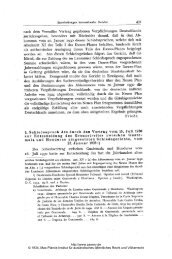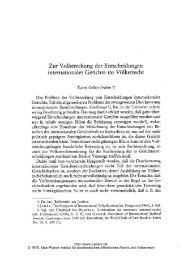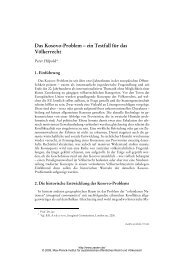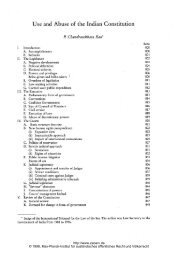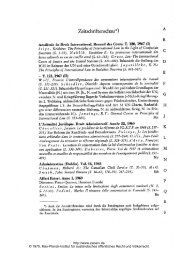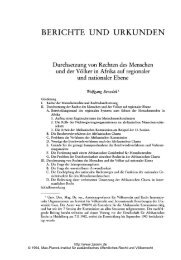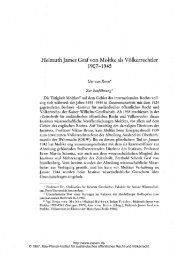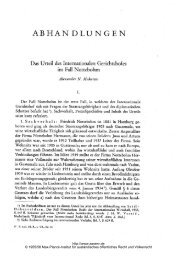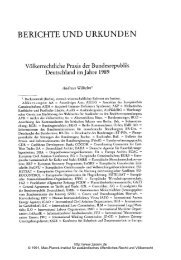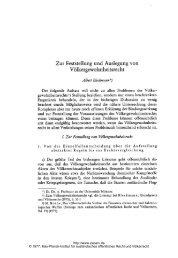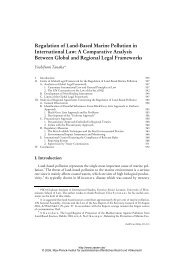Die Verfassung der Republik Usbekistan Geschichtlicher ...
Die Verfassung der Republik Usbekistan Geschichtlicher ...
Die Verfassung der Republik Usbekistan Geschichtlicher ...
Erfolgreiche ePaper selbst erstellen
Machen Sie aus Ihren PDF Publikationen ein blätterbares Flipbook mit unserer einzigartigen Google optimierten e-Paper Software.
976 Sacarcelikzukommt, kann nicht immer abschließend gesagt werden, zumal öffentliche Interessenauch nicht statisch, son<strong>der</strong>n dem Wandel <strong>der</strong> Zeit unterworfen sind. Allerdingskann festgestellt werden, dass im <strong>Verfassung</strong>sstaat <strong>der</strong> Inhalt des öffentlichenInteresses durch die Grundrechte maßgeblich mitbestimmt wird, so dass das Argument,öffentliche Interessen verfolgen zu wollen, nicht greift, wenn dabeiGrundrechte gänzlich aus den Angeln gehoben werden. Der Wesensgehalt <strong>der</strong>Grundrechte muss immer erhalten, ihr Kernbereich unangetastet bleiben, auchwenn legitime Interessen des Staates berührt werden.Ein weiterer wichtiger Unterschied zwischen <strong>der</strong> usbekischen <strong>Verfassung</strong> unddem deutschen Grundgesetz kann, wie bereits dargestellt, darin gesehen werden,dass die usbekische <strong>Verfassung</strong> bürgerliche Grundpflichten aufstellt, die demGrundgesetz wesensfremd sind. Mag man Grundpflichten, soweit sie dem Allgemeinwohldienen und dem Einzelnen zumutbar sind, noch akzeptieren, kann esdoch nicht angehen, dass Grundpflichten nach <strong>der</strong> Formel do ut des konzipiertwerden, also ein synallagmatisches Verhältnis zwischen Leistung (des Staates) undGegenleistung (des Bürgers) begründet wird.Summary 101The Constitution of the Republic of UzbekistanHistorical Background, Basic Rights and Institutions of the StateThis article examines the Constitution of the Republic of Uzbekistan with emphasison its fundamental principles, the provisions stipulated therein and the constitutionalstructure of state institutions, after providing a short introductory outlineof the different legal cultures and traditions which dominated the territories ofcontemporary Uzbekistan in the past.With the conquest of Transoxania by the Arabs in the beginning of the eighthcentury, Islamic law (šarî‘a) governed the territory, coexisting with pre-Islamiccustomary law (arab. ‘âdât). Almost 500 years later, the Mongols who invadedCentral Asia introduced their yasa, which was subsequently upheld and followedby the succeeding Timurids. After the annexation of a consi<strong>der</strong>able part of CentralAsia to Russia in the second half of the nineteenth century, the Tsarist governmentconducted legal and administrative reforms, trying to change the legal culture ofthe region. However, the Russian imperial power largely left administration at thelocal level in the hands of local Muslim clerics and native administrators, with customarycourts retaining jurisdiction over most of the cases. Un<strong>der</strong> Soviet rule, themap of Central Asia was significantly redrawn and subdivided into the Union Republics.The Soviet rulers aimed to integrate the native population into new politicaland legal structures subordinated to the centre.101Summary by the author.ZaöRV 67 (2007)http://www.zaoerv.de/© 2007, Max-Planck-Institut für ausländisches öffentliches Recht und Völkerrecht



